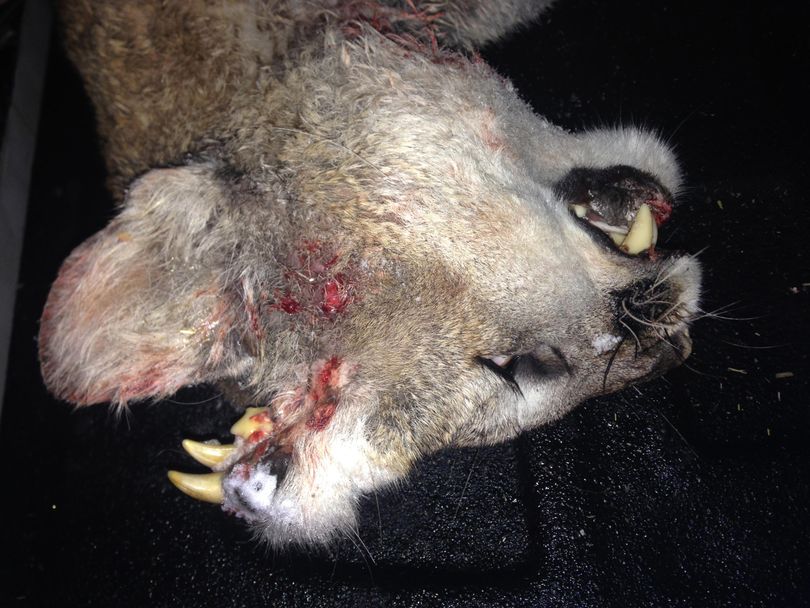Deformed cougar with teeth in skull detailed by experts

WILDLIFE -- Photos of a mountain lion with teeth growing from the top of its skull made the Internet buzz last week.
The deformed cougar was legally killed by a hunter after the cat attacked a domestic dog. It would have been a non-story except that this cat was a freak of nature.
Now that Idaho Department of Fish and Game biologists have had a chance observe the cat, here are their observations on this unusual case.
● On Dec. 30, 2015, the young male mountain lion was observed attacking a dog on a landowner’s property in the rural Weston area. The mountain lion ran off and its tracks were followed through other properties and eventually to a place where the cat had retreated to the hills. Within three hours of the attack, the hunter began tracking the mountain lion with the use of hounds and harvested the cat legally that same day. The dog attacked by the mountain lion survived.
● The mountain lion had an unusual deformity—fully-formed teeth and what appears to be small whiskers were growing out of hard fur-covered tissue on the left side of the animal’s forehead.
● Idaho Fish and Game cannot definitively explain why this abnormality developed on this mountain lion. It is possible that the teeth could be the remnants of a conjoined twin that died in the womb and was absorbed into the other fetus. It is also possible that the deformity was a teratoma tumor. These kinds of tumors are composed of tissue from which teeth, hair, and even fingers and toes can develop. They are rare in humans and animals. Biologists from the southeast region of Idaho Fish and Game have never seen anything like this particular deformity before.
● As required by law, the hunter reported the harvest of the mountain lion to Fish and Game, and a conservation officer checked the mountain lion-- a process that includes verifying the hunter has a valid hunting license and tag, recording information about the harvest location and method of take, recording information about the animal itself, and pulling a tooth for age analysis. The hunter is not required to turn the animal over to Fish and Game for further analysis.
● Mountain lions are common in Idaho and a native game species. Because of their elusiveness and wariness, human encounters with mountain lions are rare. During the winter, deer, turkeys, and other prey species move to lower elevations to escape colder temperatures and deeper snow, often gathering where urban or rural communities interface with the surrounding wildlands. These prey species attract predators like mountain lions. When that happens, conflicts with people, livestock, and pets can occasionally occur.
● Mountain lions can be legally hunted in Idaho. Mountain lions are classified as a big game animal like elk and mule deer. That means that they can only be pursued during set seasons in areas open to hunting with the appropriate license and tag. In general, only one mountain lion can be harvested by a hunter in any given year. Dogs can be legally used to assist a hunter with the pursuit of mountain lions with the appropriate hound hunter permit.
General Mountain Lion Facts
Also known as cougars, mountain lions are large cats, tawny to grayish in color, weighing 80-200lbs. The tail, which can range in length from 2 ½ to 3 feet, is rope-like in appearance (not bushy) and has a black tip. Mountain lions have large home ranges (50 to 150 square miles).
Mountain lions prey on deer, elk, moose, mountain goats, bighorn sheep—with deer being the common prey in Idaho. They will also eat raccoons, rabbits, and other small mammals. Occasionally, they will prey on domesticated pets and livestock.
